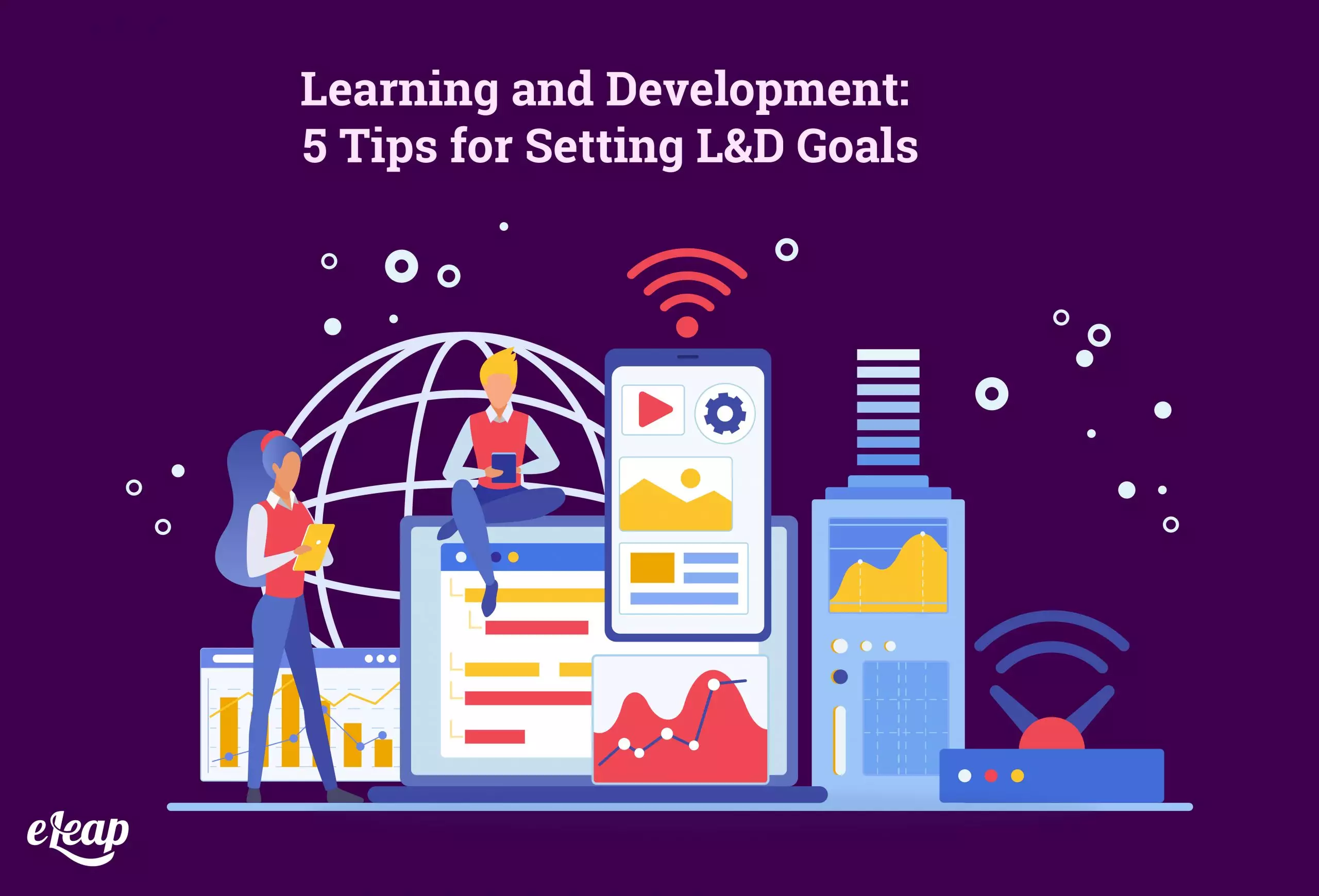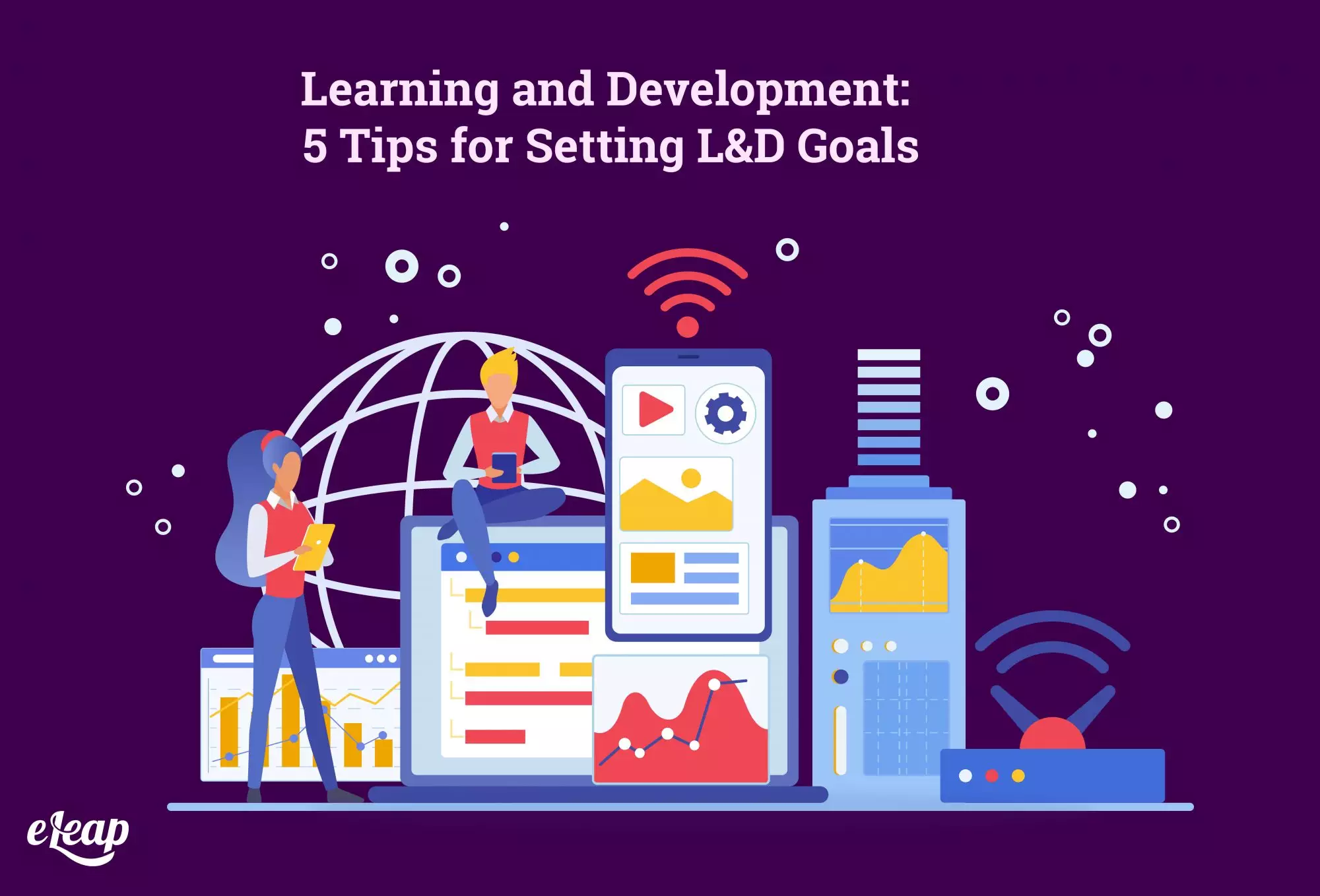Learning and Development: 5 Tips for Setting L&D Goals

Learning and development has always been an important part of business success. Mandatory corporate training, professional continuing education, and mandatory upskilling all play into that. However, L&D can be so much more and it starts with setting the right L&D goals.
With the right approach, you can use your learning and development platform to build a stronger, thriving organization. It can help your team members advance their careers, build their confidence, and even imbue them with a greater sense of personal and professional accomplishment. It can even help you reimagine your corporate culture.
However, to see those benefits, you need to use it correctly. Setting L&D goals is essential, but it can be challenging to do, in large part because it’s simply that there are so many considerations that you must make. In this post, we’ll cover five critical tips to help ensure you’re able to set L&D goals appropriately and make the most of these opportunities.

1. Know Where You Stand
First, before you do anything else, make sure you know where you stand in terms of the skills gap. You also need to know where you want to go with upskilling. What is the ultimate goal here? Is it professional certification? Is it moving someone from a lower position within the company to a higher position? Conduct a needs analysis to determine what skills are lacking, or which ones are subpar. This can also help you identify positions that need new talent to fill them. Basically, you’re defining the departure point of your journey. Without knowing where you’re starting from, you can’t create goals to reach your objective.
It also pays dividends to do some research into why you have a skills gap in the first place. Is it something that could be remedied through onboarding? What about through intentional, strategic hiring and promotion? If you can determine why the skills gap exists, you can take intentional steps to prevent a similar situation in the future.
2. Tie It into Their Future
Learning and development shouldn’t be a chore. It shouldn’t be something that your team members do “just because” or because it’s required by leadership. While you can force it, that path leads to disengagement, devaluation, and disconnection.
Imagine this scenario: You’re pulled from your regular job duties (which still need to be completed, by the way), and told that you need to complete a module – it’s not clear why the content is necessary, or even how it applies to you or your role within the organization. Do you think that you’d go into the situation with an open mind, ready to learn, grow, and develop? Do you think that you would retain what you learned during the module? Of course not.
So, how do you get around this? You tie the modules into each employee’s future. You make it clear why it matters – not just why the material is important, but how it applies to the employee’s future.
3. Connect the Dots
Charting a career path can be confusing. Some employees may not know how to get from point A to point B and so on. You can help them by setting L&D goals that help them connect those dots. Of course, this will require that work with each person to understand what they want to achieve and where they want to go in the first place.
By connecting the dots, you’re able to design an L&D path that’s customized to each individual. This helps to make learning more impactful and helps them see the value in each lesson because each “dot” is tied to what came before and what comes after. Think of it as a map if you want – you’re helping them to create a map of their career journey and then embark on that journey.
4. Make It Meaningful
Learning without meaning does little good. Of course, your material has meaning at some level, but it may not be apparent to your learners. Take the time to make the meaning (and inherent value) of each lesson and module apparent. If necessary, create a brief synopsis of what will be learned and why it matters before individual lessons to hammer home why what’s being taught matters.
It’s all part of breaking down mental barriers your learners may have. By stating directly what they’ll learn and why it matters, you’re able to forge a deeper connection and get beyond blinders your learners may have on. In addition to making it meaningful to the employee, make sure you explain why the material is meaningful for the team and the organization as a whole.
5. Set Incremental Goals
Finally, make sure that you’re setting incremental goals. Trying to go too far too soon will result in disengagement for your learners. It’s a form of burnout, and it can affect anyone.
Break your larger L&D goals into smaller, more manageable chunks. Create content around each of those chunks, and use that content to help connect the dots, with each step leading your learners closer and closer to successful completion. Chunking is a concept that’s been used in all industries to turn what would be unwieldy projects or goals into something more easily achieved.
Bonus Tip
As a bonus tip, make sure that each learner’s goals also tie into your goals for the organization. For instance, having Joe complete a particular customer service module might tie into both developing his potential as a customer service specialist, but also into the organization’s goal of ensuring that all customer service reps can solve customer problems without escalating the issue to management.
Unlocking Your Employees’ Potential
Learning and development initiatives help build stronger teams, improve performance, and increase engagement. However, to be successful here, you need to know how to set L&D-related goals. Thankfully, setting effective goals doesn’t have to be an insurmountable challenge. The five tips we covered above should put you on the path to unlocking employee potential through effective training and development.